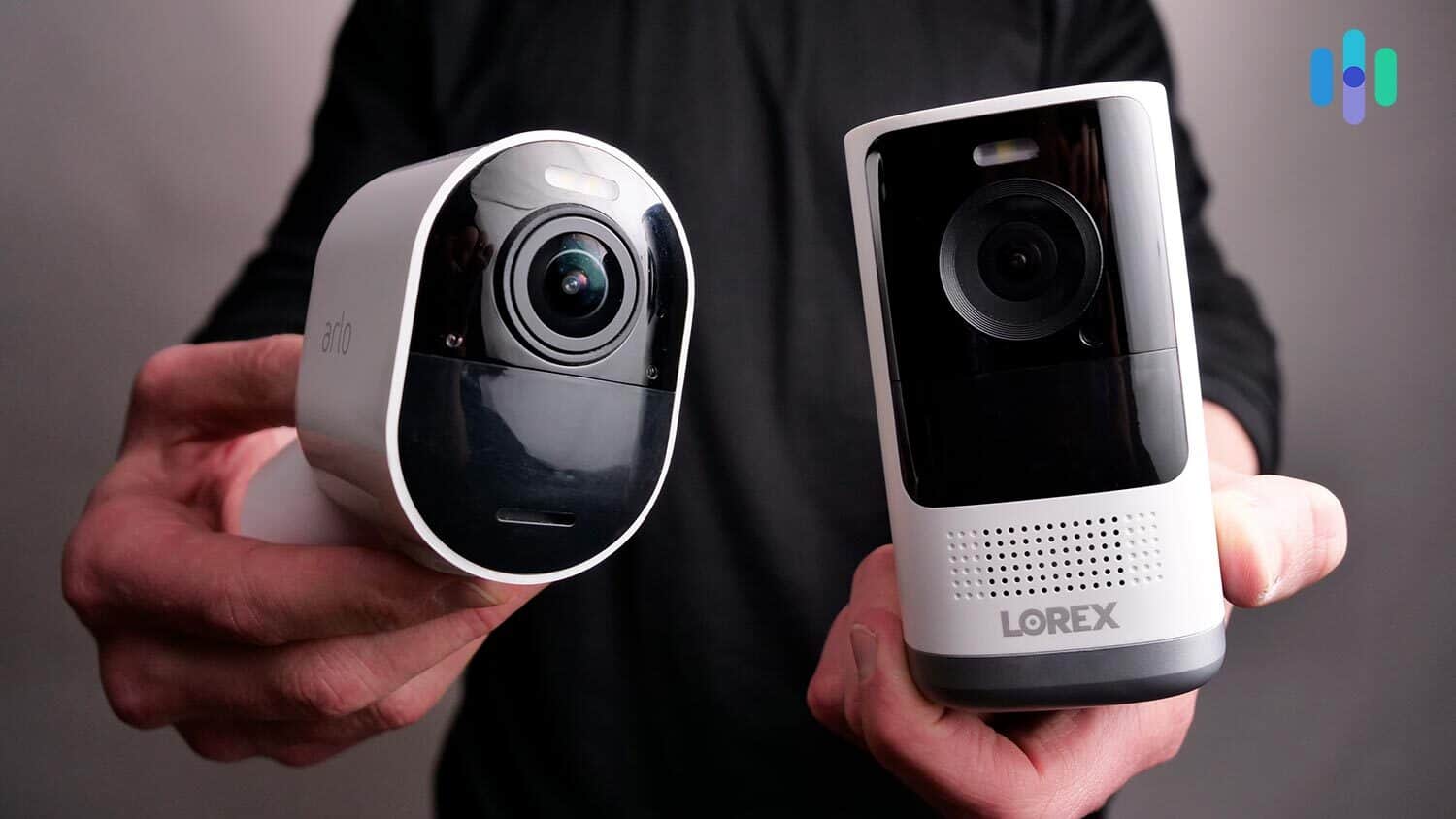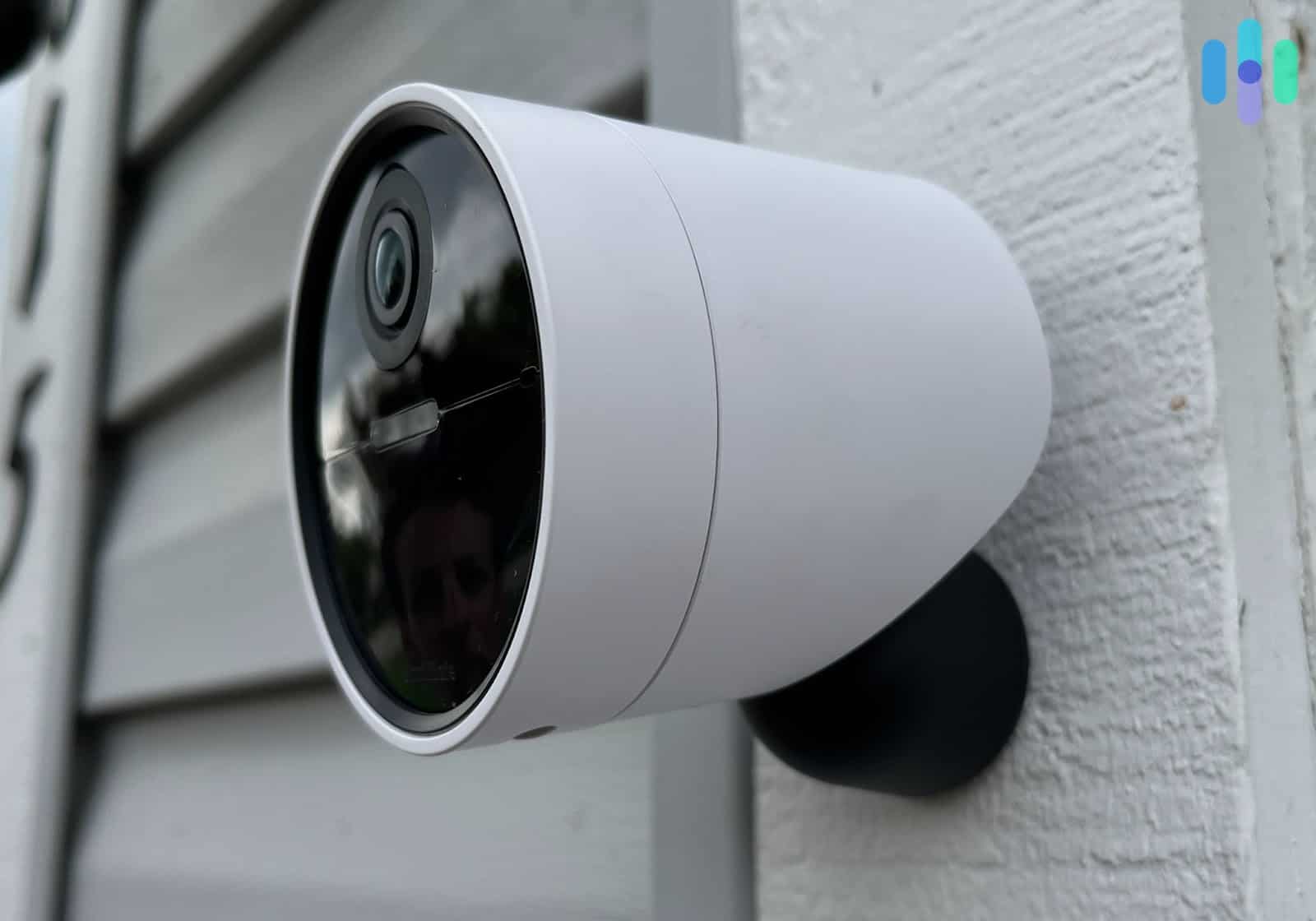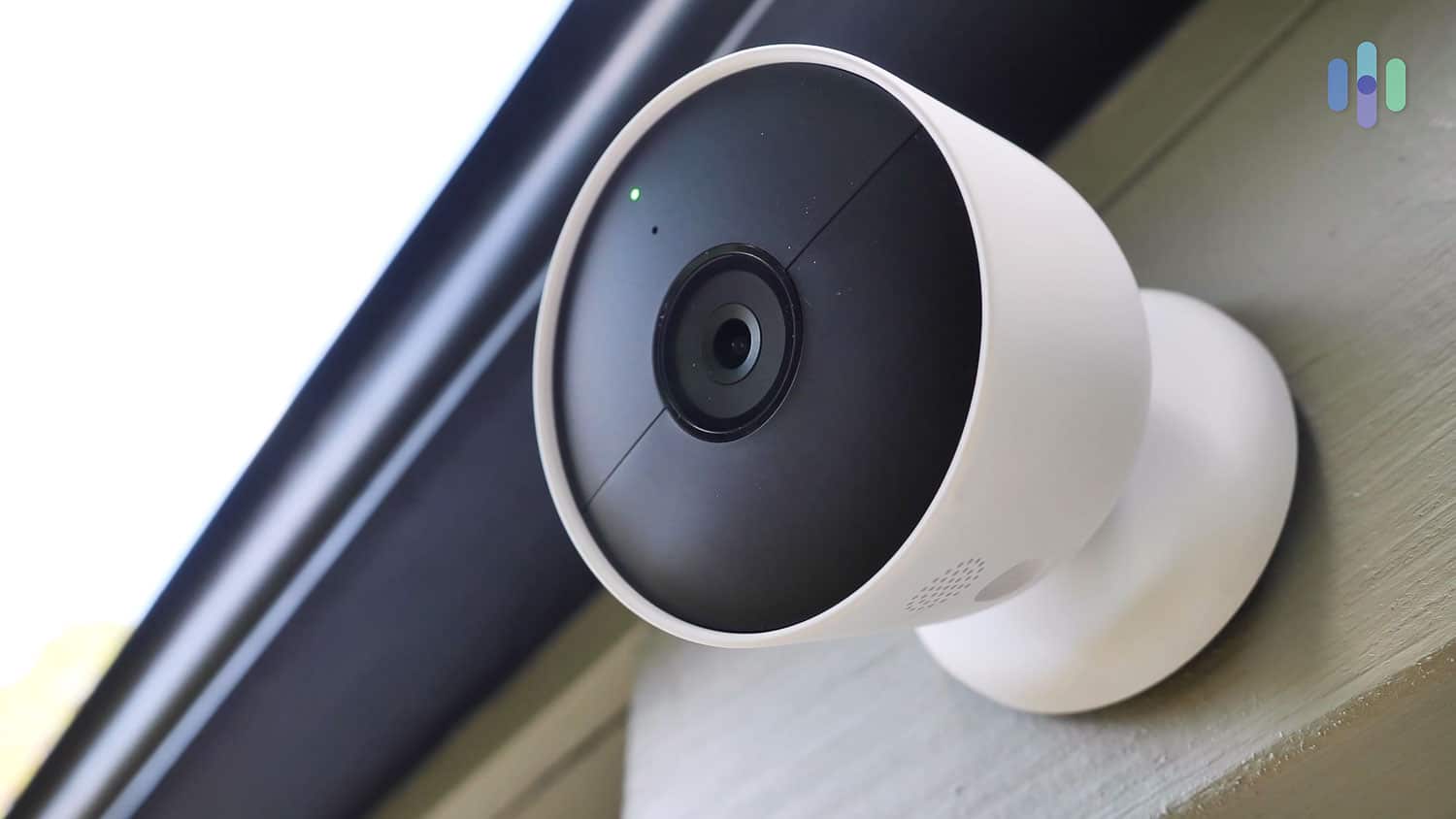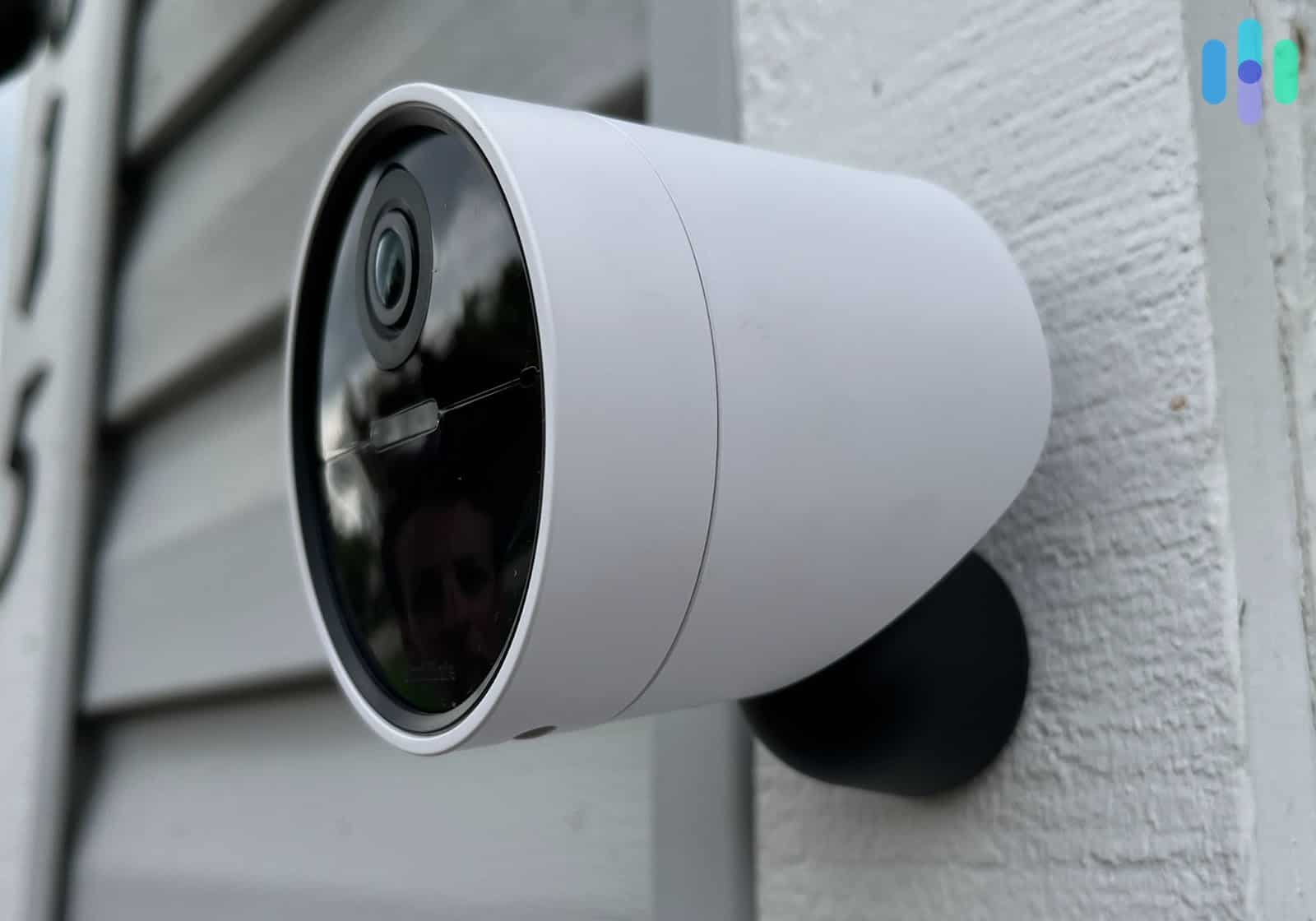Editor’s Note: Not all security systems need Wi-Fi. If you’ve got an unreliable network, we recommend getting a wired security system that comes with all the essentials to keep your home safe.
- Wi-Fi plays a big role in video monitoring, but there are security cameras that don’t need Wi-Fi.
- Local storage is the key; store videos into a microSD card or local recorder and play them back on your computer.
- Want live video streaming without Wi-Fi? Arlo Go is the solution. Read our Arlo review for more.
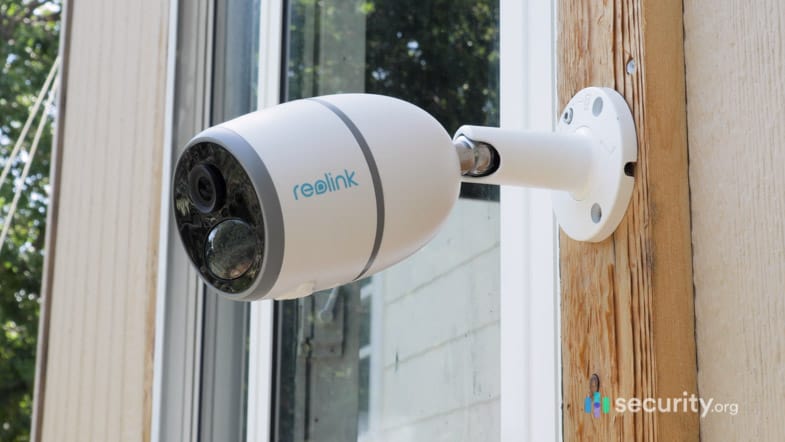
Most modern security cameras use Wi-Fi to stream and record video, but Wi-Fi isn’t an absolute necessity. If you have a remote property like a cabin or boat, there are cameras capable of monitoring them. However, home cameras that can bypass Wi-Fi are more the exception than the rule.
That’s why we regularly test security cameras that do not need Wi-Fi. If you’re looking to stream live video, we recommend looking at the cellular-enabled Arlo Go and Reolink Go cameras. If you aren’t worried about streaming video but want to record video, Lorex sells many great cameras that connect to a digital recorder. Let’s dig into how these cameras work without Wi-Fi and why these are our recommendations.
Pro Tip: No Wi-Fi? No problem. Lorex security cameras can record every second of every day, online and offline. Read our Lorex review to see how you can turn your Wi-Fi-free space into a secure fortress.
Can Security Cameras Function Normally Without Wi-Fi?
If you’re used to Wi-Fi home security cameras, there are some factors and potential costs to consider before we move forward. If you want live surveillance and real-time alerts, you'll need a camera with cellular capabilities and a data plan. If you're not worried about live surveillance but want to record video, you'll need local storage, such as a microSD card or DVR. If these considerations seem doable, here are some Wi-Fi-less security cameras to consider.
Cellular Signal-Ready Security Cameras
In the same way your phone operates normally whether it’s on Wi-Fi or a cellular network, cellular-capable security cameras have all the functionality of Wi-Fi cameras, from livestreaming or providing push alerts.
But as with your phone, you have to pay a subscription fee to connect these cameras to a 4G/LTE or 5G network. This can make the cost of a cellular system prohibitive, especially because cellular-capable cameras aren’t cheap. The Arlo Go and Reolink Go cameras we tested cost more than $200, which is above the average security camera cost. When you add in a data plan, it takes these devices out of the running for our best affordable cameras list.
Still, let’s take a closer look at Arlo Go and Reolink Go.
- Arlo Go: Most of the Arlo home security cameras we test connect to Wi-Fi, but the Arlo Go lineup is fully-cellular. These cameras require a compatible SIM card and for cellular data, Arlo has partnered with Verizon and Cellcom. Arlo Go cameras can record to the cloud, send notifications, livestream videos, and connect to the Arlo app for monitoring.
- Reolink Go: We’ve reviewed Wi-Fi cameras like the Reolink Argus 2, but we wanted to try one of the newer versions of the Reolink Go, which uses a 4G LTE connection. However, it does need a Nano SIM card and cellular data plan to get it working. While that adds costs, the Reolink Go has a few budget-friendly features like a solar panel accessory for non-stop power supply and a MicroSD card slot so you don’t need to pay a monthly subscription for cloud storage.
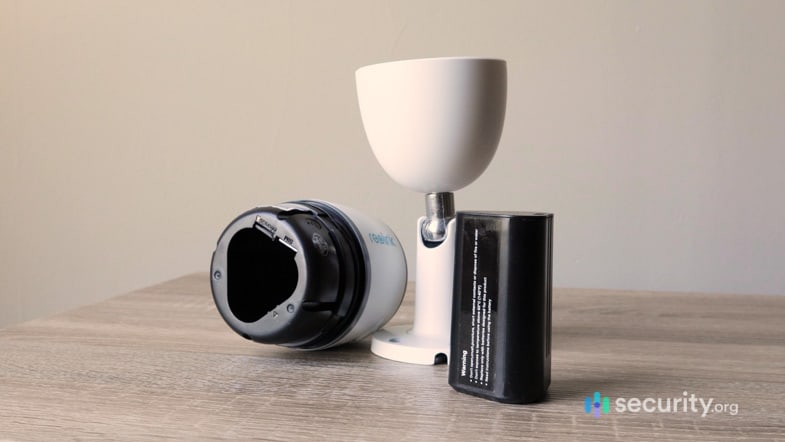
As we touched on earlier, there are ongoing usage costs to contend with. For our Arlo Go 2, we paid $2 per month for a 1GB data plan. We had the option to pay $7.99 per month for cloud storage, but we chose to use MicroSD for storage, which we bought off Amazon. It was better than paying $10 extra in total per month for one security camera.
If you have multiple Arlo security cameras, there is another cloud subscription option. Arlo has a plan that’s $17.99 per month, and it covers all your Arlo cameras. You get 60 days of video history, people, package, and animal detection, and theft replacement. However, you’ll still have to pay for the data plan for each camera.
Speaking of data plans, it isn’t practical to stream for long periods over a cellular network. Plans for the Arlo Go 2 typically provide 1 GB of data per month, which gets used up after about two hours of 1080p video. It’s more practical to upload event clips to the cloud. If you’re looking at storing more than two hours of event video, you’ll need to pay for more cellular data.
You can buy additional data to ensure all recordings will be uploaded, but that further increases your usage cost. If you value video recording but want a more practical option, the second type of Wi-Fi-less cameras might be more suited for you.
Limited data options means you might have to make some sacrifices if you don’t want to upgrade your usage plan. We made a few adjustments with Arlo Go 2 and Relink Go by adjusting our detection sensitivity settings to reduce false alarms. Plus, we used a microSD card to eliminate data usage for cloud recordings.
Note: Both the Arlo Go and the Reolink Go require cellular data plans for remote control, remote viewing, and notifications.
Security Cameras With Local Video Storage
One way to avoid data usage limits and costs is to store video locally. With this approach, you could easily capture continuous video. Businesses without Wi-Fi that want 24/7 surveillance may want to consider using local storage. However, there are drawbacks with this approach as well.
The only issue we have with these cameras is they operate on a closed network. So, while you’re out gallivanting with friends and family, you can’t receive push notifications or stream live footage like you can with a cellular security system. In our opinion, these types of security setups are better for businesses with employees who can monitor the footage on-site and around the clock.
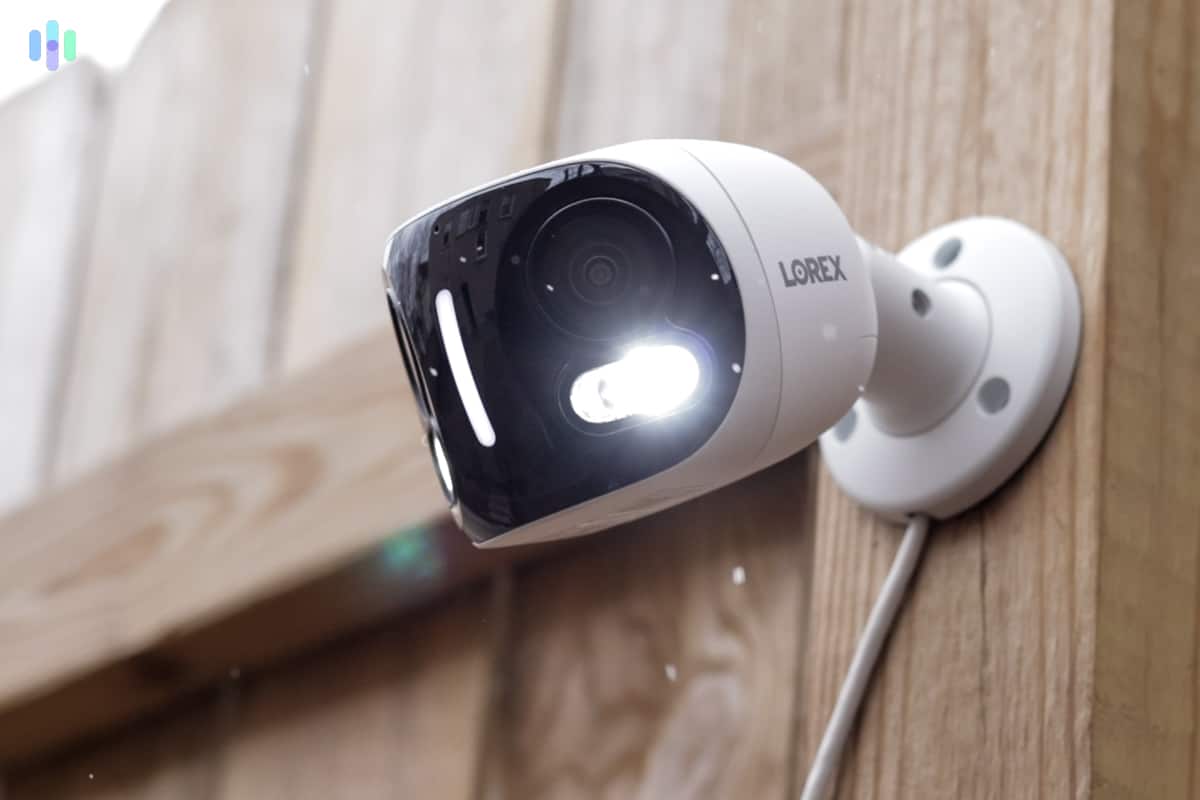
Another concern is that all video footage is stored in the camera or on a DVR. So you can’t access the videos from anywhere like you can with cloud storage. There’s also a risk that the storage function might corrupt or the files will be stolen. Some maintenance and protective measures may be required to avoid these problems from occurring.
If you can live with those drawbacks, these are the different types of cameras with local video storage.
- CCTV: CCTV cameras, or closed-circuit television cameras, are used by businesses and police for surveillance; they’re not usually used for home security purposes. Instead of watching the footage on an app, guards watch CCTV footage on several monitors, and storage is on either a DVR or an NVR, a network video recorder for digital systems. CCTV cameras include analog and IP cameras, along with HD-over-coax.2
- Analog: Analog cameras transmit video from the camera to a DVR, often via coaxial cable.
- HD-over-coax: In HD-over-coax cameras, uncompressed video travels from cameras to recorders via coaxial cable. The video is high-resolution, but very few cameras work with coaxial cables.
- IP: An IP camera is usually synonymous with a surveillance camera, as it’s a lot more expensive than regular home security cameras.3
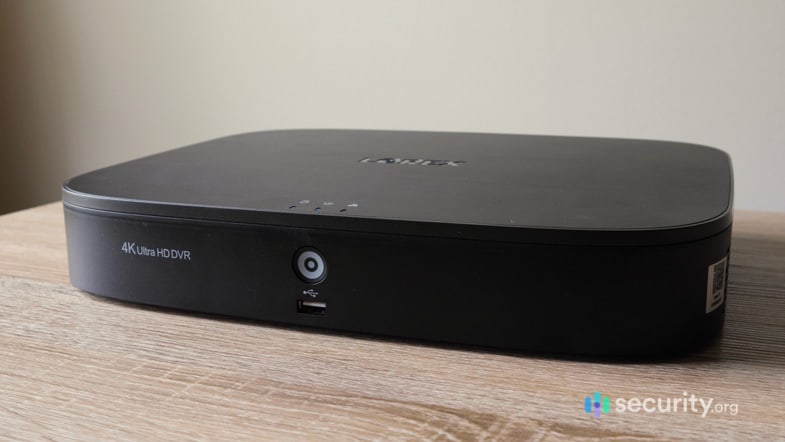
Lorex has one of the largest lineups of security camera systems with local storage. Its DVR systems typically offer 1 TB of storage space, shared among up to 16 security cameras. In our experience, that much space is enough for 20 days of 1080p videos from one camera. If you have two cameras, each will have about 10 days; if you have four, about five days.
What we like about Lorex – which we also mentioned in our Lorex review – is that you can typically expand the storage space. Our Lorex DVR had three expansion slots for hard disk drives, each able to accommodate a hard drive up to 1 TB. That’s 4 TB total, which can store a month of videos from a couple of cameras.
There’s another downside though, which is the cost. Besides the cost of cameras, you’ll need to buy the storage device as well. MicroSD cards are the cheapest, but they are also the most susceptible to tampering and getting corrupted. Plus since they go in your cameras, they are prone to theft. We recommend a DVR or NVR, but such a device with 1 TB of space costs at least $100. Each 1 TB expansion drive ranges from $50 to $100, too.
FYI: Lorex recently created separate websites for its residential and commercial-grade cameras. Now, you must register as a Lorex business partner to access the commercial-grade cameras.
Are Security Cameras Without Wi-Fi Harder To Install?
Although many home security companies might have you thinking otherwise, security cameras that don’t require internet through Wi-Fi aren’t necessarily harder to install than Wi-Fi cameras. As some cameras that don’t need internet are wireless, like the Reolink Go and the Arlo Go, installation can be quite easy. It’s an added bonus that they’re battery-powered, so you can place them literally anywhere, whether there’s a power outlet nearby or not.
You’ll have to do some wiring for cameras that record to DVRs. Typically, you have to use an ethernet or coaxial cable to connect the camera to the DVR. If you want to conceal the cabling, the installation can become complex, especially if you’re looking to run cabling inside the walls or between floors. It took us about half a day to install six Lorex cameras on our property and set up the DVR.
On that note, look for PoE (Power-over-Ethernet) cameras if you want to minimize the amount of wires running around your house. PoE cameras use the same Ethernet wire for power and to transmit video and audio to a DVR. That’s one less wire for you to take care of.
Wi-Fi vs. No-Wi-Fi Cameras
So, what are the advantages and disadvantages of using cameras that do and don’t work with Wi-Fi? We’ve broken it down below.
Wi-Fi Cameras Pros and Cons
Pros
- No data plans required: Since you probably already have Wi-Fi in your home, you won’t have to pay for any additional data plans.
- Live streaming: You’ll be able to see what’s going on at home through your mobile app.
- Remote control: Most cameras also allow for remote control, including arming and disarming, zooming in optically, and speaking through two-way audio.
- Notifications: Depending on the camera’s level of artificial intelligence, you’ll be notified when it senses movement, a person, a package, a pet, or a vehicle. The more AI capabilities the camera has, the more specific notifications you get.
While some cameras that don’t require Wi-Fi have these features, again, they’ll require data plans for a price.
Cons
- Bandwidth usage: If you’re buying more than just one camera, it could easily crowd your network. We don’t know about you, but as it stands, we have enough devices connected to Wi-Fi already, from phones to laptops and smart TVs. Connecting too many devices can slow down your internet connection, so we recommend creating a local network specifically for your Wi-Fi cameras (e.g. a separate router for cameras).
- Faulty Wi-Fi: Cameras that are heavily reliant on Wi-Fi can be rendered useless by a simple internet outage. Is your internet provider reliable enough, or does the Wi-Fi go out more often than you’d like? If it’s the latter, then a camera that doesn’t require Wi-Fi might work better for you.
- Hacking: As we’ve seen with Ring cameras4, Wi-Fi cameras can be hacked, especially if you don’t protect your network and mobile app with a secure password.
Tip: To improve your Wi-Fi connection throughout your home, use a mesh network with multiple access points. One example is the Nest Wi-Fi, which we think is one of the best smart home devices around.
No-Wi-Fi Cameras Pros and Cons
Pros
- They’re not as hackable. Although cellular data is hackable as well, it’s much safer than Wi-Fi, even secure Wi-Fi networks5 If you use an IP, Analog, or HD-over-coax camera system, it will be even harder to hack as an intruder would need physical access to your recorder to affect your cameras.
- You may still be able to get remote features. If you use a data plan, you don’t have to miss out on remote control, notifications, and live streaming, which are the main benefits of smart home security. That is, if your security camera supports LTE functions. Otherwise, you will have to make do with local recording.
While some cameras that don’t require Wi-Fi have these features, again, they’ll require data plans for a price.
Cons
- They may require a data plan. Again, if you want the above features, it’ll cost you in the form of a mobile LTE plan.
- They’re bulky. Many CCTV cameras are bulky, especially if they require large DVRs.
- They’re expensive. Intended for business or police use, CCTV cameras cost more than regular security cameras that work with Wi-Fi.
Recap
As you’ve seen, running security cameras without Wi-Fi is doable. It might not always be feasible though. The cost of setting up and maintaining cellular-ready security cameras might be too high for some. The lack of alerting and streaming features of security cameras with local storage might be a deal-breaker for others. That’s why if possible, we recommend using internet-connected security cameras.
If you absolutely need video surveillance for a property without Wi-Fi, though, we recommend Lorex and its cameras that can record locally. It offers highly visible and durable cameras. Sometimes, that’s all you need to deter criminals. And if that doesn’t work, at least you’ll have recordings of any incident thanks to its 24/7 recording.
Frequently Asked Questions
The idea of using smart home security cameras without Wi-Fi isn’t that common, so people have a ton of questions about it. We’re here with answers!
-
Can wireless cameras work without Wi-Fi?
There are wireless cameras that can work without Wi-Fi. The Arlo Go and the Reolink Go, for example, are both wireless cameras that use cellular data plans instead of Wi-Fi.
-
Do all home security cameras require Wi-Fi?
Not all home security cameras require Wi-Fi. Some cameras, like the Arlo Go and the Reolink Go, can use LTE plans instead of Wi-Fi. Other home security cameras aren’t connected to the internet at all but rather record onto local storage like hard drives.
-
What is better, wired or wireless security cameras?
Both have pros and cons, wireless cameras are easier to install but their connection is less dependable. Completely wireless cameras are battery-powered, which has its own set of issues. Wired cameras are harder to install, but provide a more dependable signal. If a wired camera needs to be plugged in or hardwired to your electrical system, it can limit where you can place the camera.
-
Can you set up cameras without the internet?
Yes, you can set up cameras without the internet. Many cameras are local only, recording onto local storage like a micro-SD card or hard drive.






